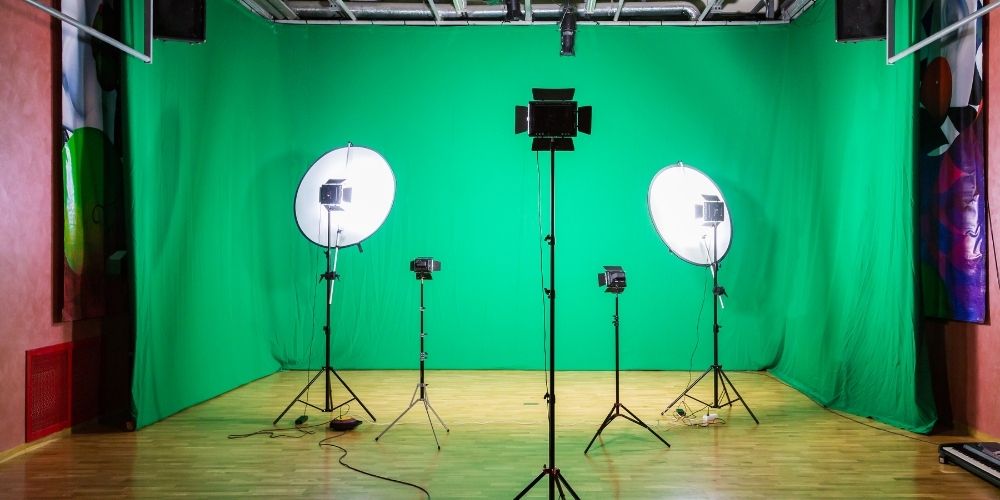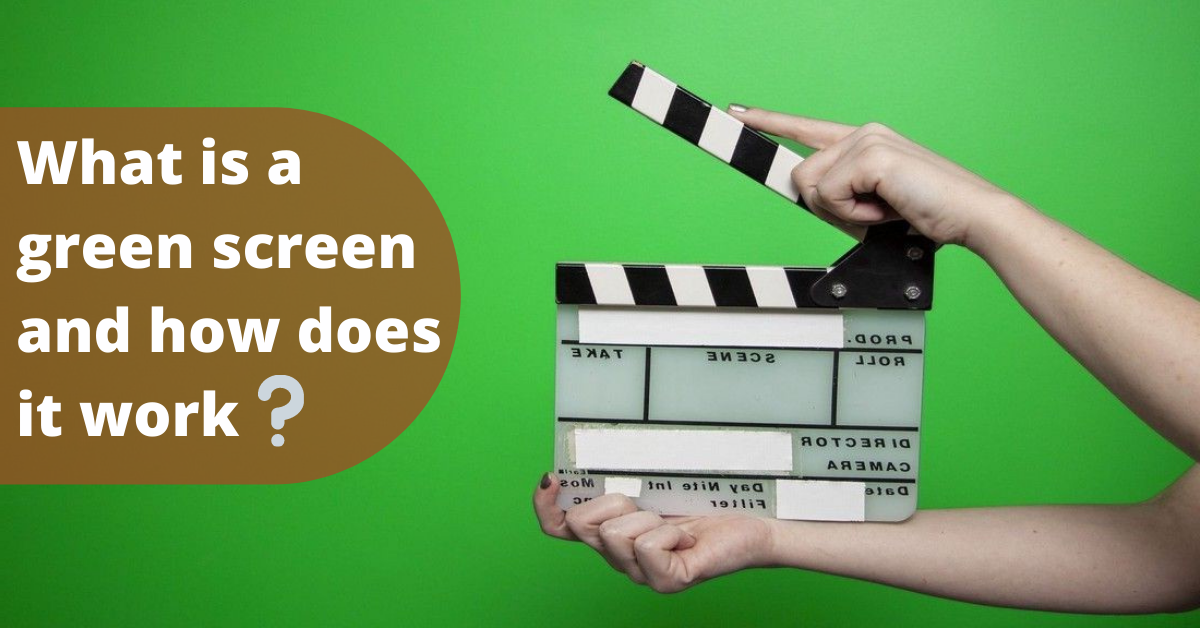What is a green screen and how does it work?
In or out of this world, films are with a green screen.
Green screen video shoots are used for creating live-motion projects involving customised backgrounds or for compositing in special effects worthy of Hollywood. When you are in finding background or even hard to access location green screen comes to you.
Why to use a green background? As it doesn’t match any natural skin tone or hair colour, so it’s easy to remove without grabbing parts of the person in the foreground. Then, by digitally removing or “keying out” that colour, you can drop that scene on the background of your choice in post-production. Removing the coloured background is also known as “chroma keying.”But if you’re trying to match a lower-light background or you need to have a green prop in your project, a blue screen works best.

What is a green screen and how does it work?
What is chroma keying?
It is the process of isolating a single color or brightness value in a computerized image and using software to make that value transparent, allowing another image to overlap that affected areas. Color keying, or chromakeying, which identifies a specific color to remove.
HOW TO SET UP A GREEN SCREEN SHOTS
- Makeup use.
- Actors can look pastel and feeble against a green background. You might need some makeup adjustments.
- Non green or reflective surfaces.
- No subject hold or wear anything green or else the areas will be transparent once are chroma-keyed.
- No-no reflective materials are also. Shiny objects will pick up the green and will also be rendered transparent. Very small jewelry is usually okay with it.
- Allow depth.
-
- Back up the camera to get full figure shot plus a good separation between the subject and the green screen usually at least 6 feet for a your actors shot.
- Depending on the lens, you’ll generally need 24-30 feet depth for a full-length shot that doesn’t shoot off the edges of the background.
- Use a coved green screen.
- To show your subject from top to bottom, the green screen has to continue down the wall and onto the floor under their feet.
- A cove will smooth out the transition from wall to floor, which avoid shadows and hard lines that cause gradient changes in the green background.
- Light evenly and softly.
- Light the green screen as fluently as possible to give an even texture and gradient. The more even the lighting is, the better and easier it’ll be to manipulate the material.
- Keep the green screen itself as clean and smooth to maintain a consistent colour range. If the screen is fabric, make sure that they don’t have any wrinkles. If painted, make a smooth painting on hand to touch up any scuffs and scratches.
- Light separately.
- The green background should be put separately from the subject to avoid:
- casting shadows on the background
- A green tone bouncing off the subject, which will cause problems when removing the background.
- At least 6 feet separation between background and subject.
- The green background should be put separately from the subject to avoid:
- Keep the camera still.
- Lock the camera so that the subject not looks like its vibrating or bouncing against the background when the camera moves even little.
- Your subject will look like its shrinking or growing in relation to the background, while zooming.
- Use Chroma Key software.
- Software based on the shots needed the editing system, budget, and user experience. Your choice for Chroma Key software will essentially depend on the type of shot required.
- On internet there’s free, user-friendly software for simpler shots, but they probably won’t be able to pull off the more sophisticated affects you see in feature films.
Avatar Studio have good Green Screen Rental in Bangalore
